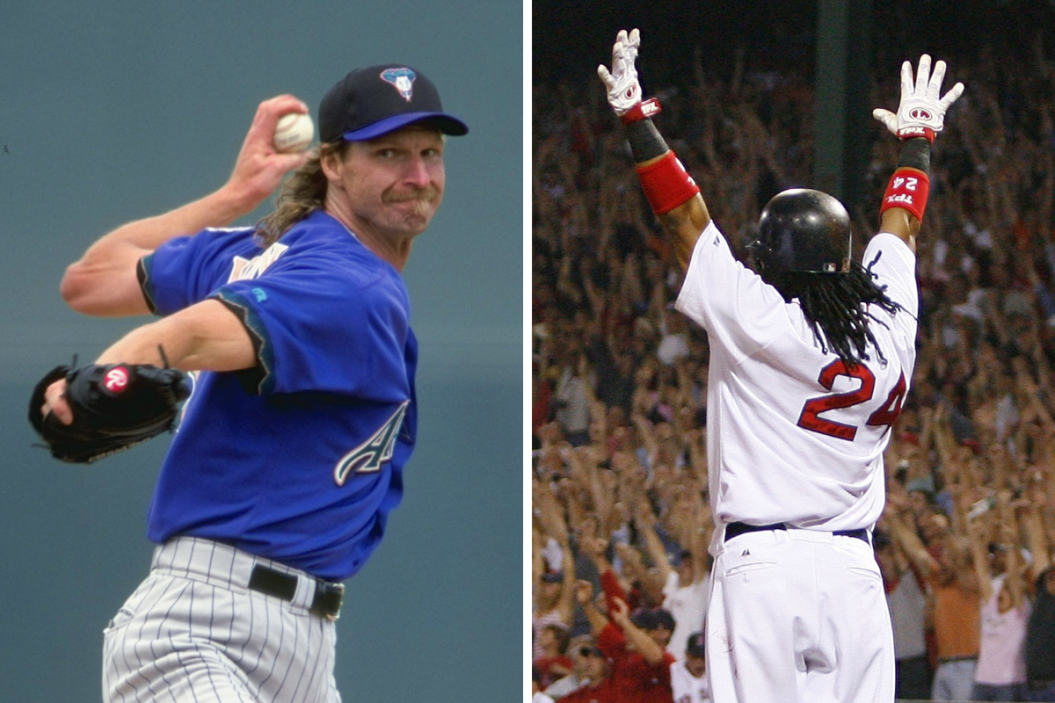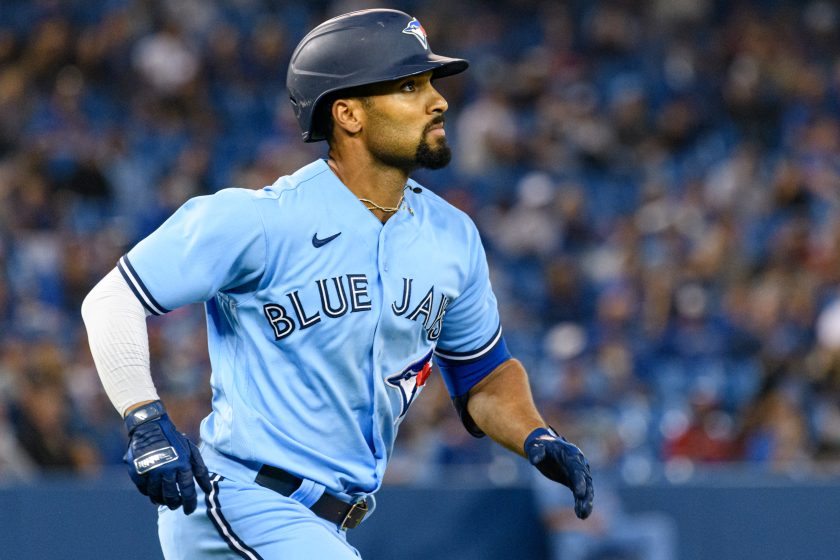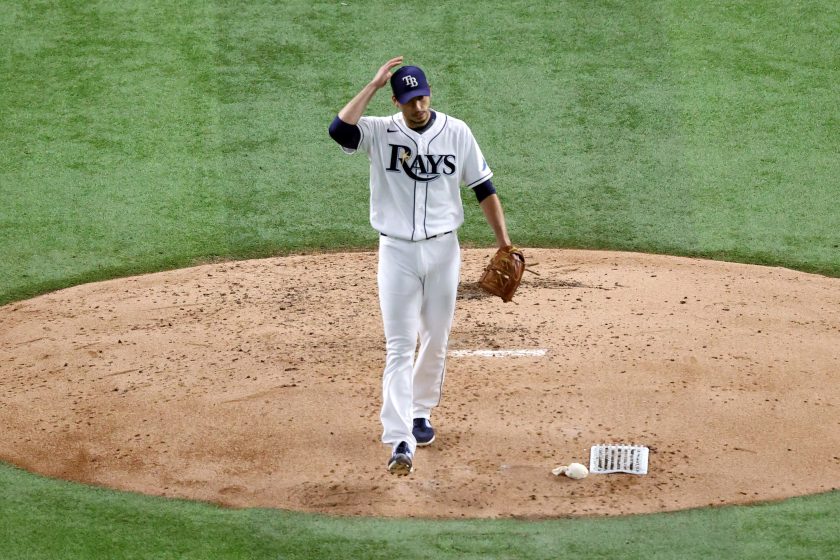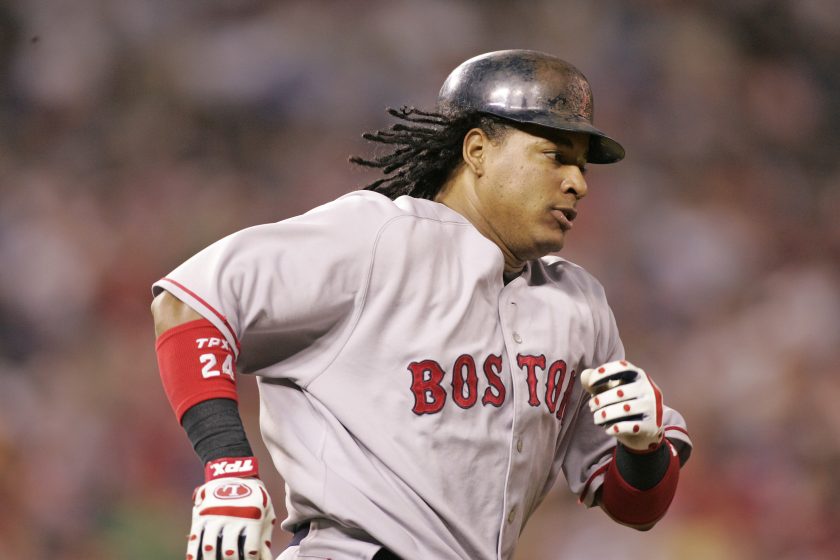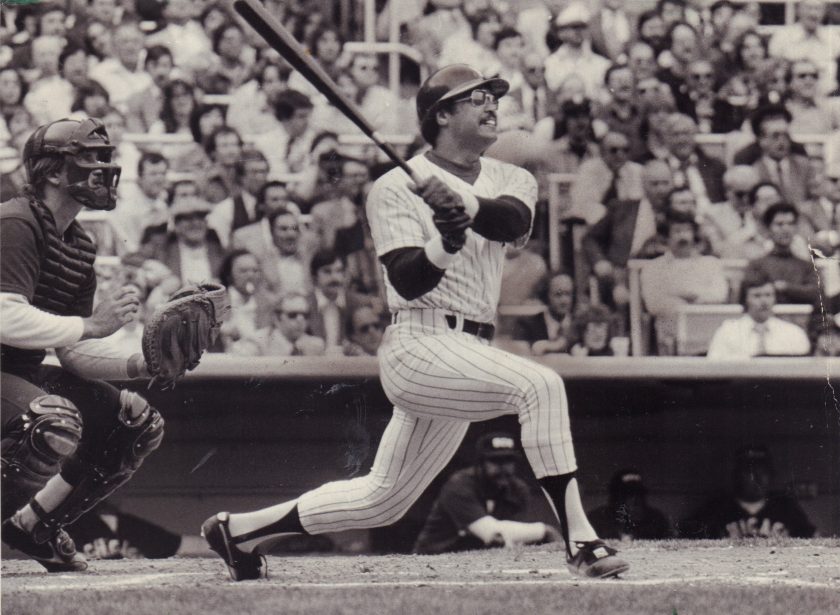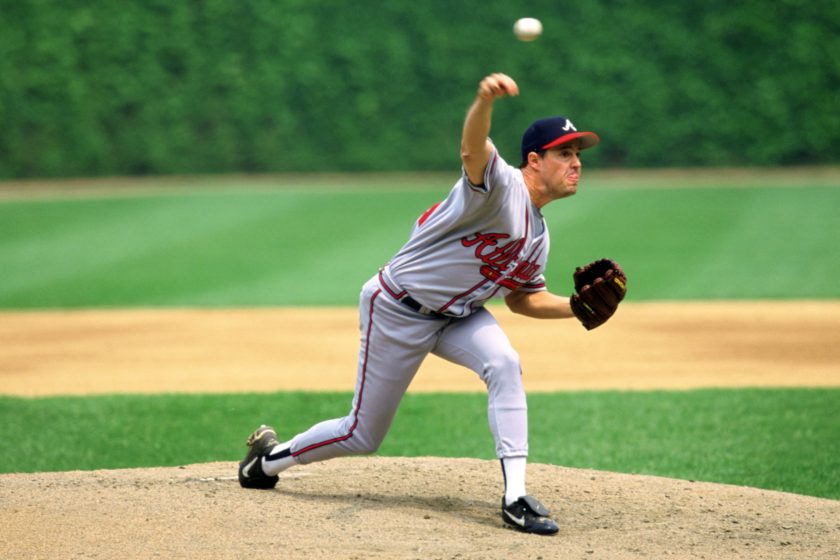In 1969, St. Louis Cardinals outfielder Curt Flood challenged the reserve clause that bound players to their teams for life. Though Flood lost, his action would set the stage for eventual success: in 1975, Dave McNally and Andy Messersmith successfully challenged the reserve clause and brought it to an end, officially beginning MLB's free agency era.
Videos by FanBuzz
Today, the league's free agent carousel is the most hopeful time of year. Teams add new players who they hope will push them over the top toward being championship contenders, and sometimes, it works.
Time will tell which of the most recent free agent deals will pan out and which will be memorably hilarious disasters (I can think of one right off the bat). MLB history is filled with examples of both sorts of deals. But which are the best free agent deals in baseball history? Which signings worked out for the player, the team and the fans?
14. Max Scherzer, Washington Nationals
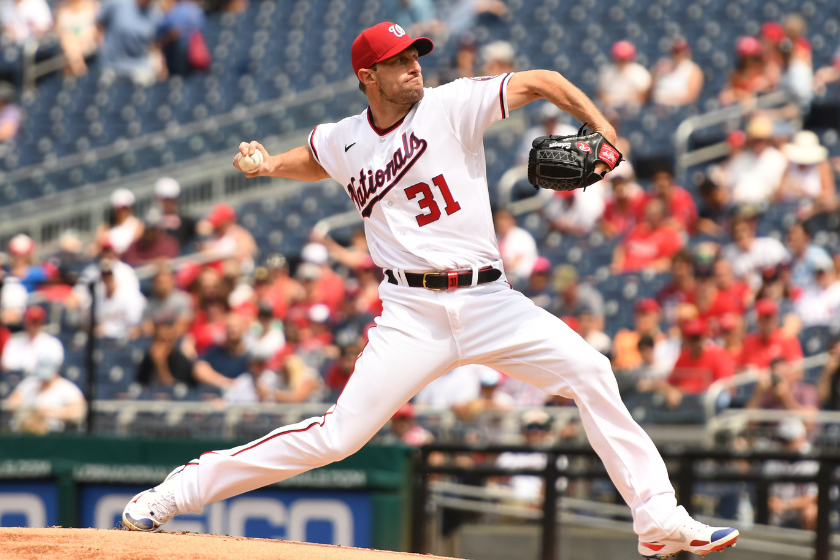
Photo by Mitchell Layton/Getty Images
We'll start with the answer everyone knew was coming. When Max Scherzer signed with the Nats for seven years and $210 million...well, it wasn't exactly panned. Scherzer was considered as near to a sure thing pitcher as you could sign, but most pundits made noises about how the Nats might regret the back end of the contract. They never regretted a moment of it: Mad Max won two Cy Youngs (finishing in the top five another four times), made five All-Star teams, led the league in pitching WAR over the length of the contract, threw two no-hitters, tied the MLB record for strikeouts in a single game, pitched a Game 7 World Series win and all but guaranteed his place as the first player in the Hall of Fame wearing a Nationals cap. Money well spent.
13. Marcus Semien, Toronto Blue Jays
Julian Avram/Icon Sportswire via Getty Images)
The rare short-term free agent deal that works out really well for both the player and the franchise. Going into the 2021 season, second baseman Marcus Semien wasn't getting the sorts of offers he thought he was worth, so he bet on himself to the tune of a one-year, $18 million deal in Toronto. Semien put up 7.3 WAR in his lone Canadian season, then cashed in for a lot more money this past winter as Texas remade their middle infield.
12. Charlie Morton, Multiple Teams
Tom Pennington/Getty Images
Charlie Morton's career is so confusing. He keeps signing short-term deals for not all that much money: two years, $14 million with the Houston Astros; two years, $30 million with the Tampa Bay Rays; and one year, $15 million with the Atlanta Braves. Morton has been effective every year of those deals, helping his teams to two World Series titles and finishing third in Cy Young voting in 2019. After his most recent 2021 deal, he signed another contract in Atlanta...for one year and $15 million.
11. Bobby Bonilla, New York Mets
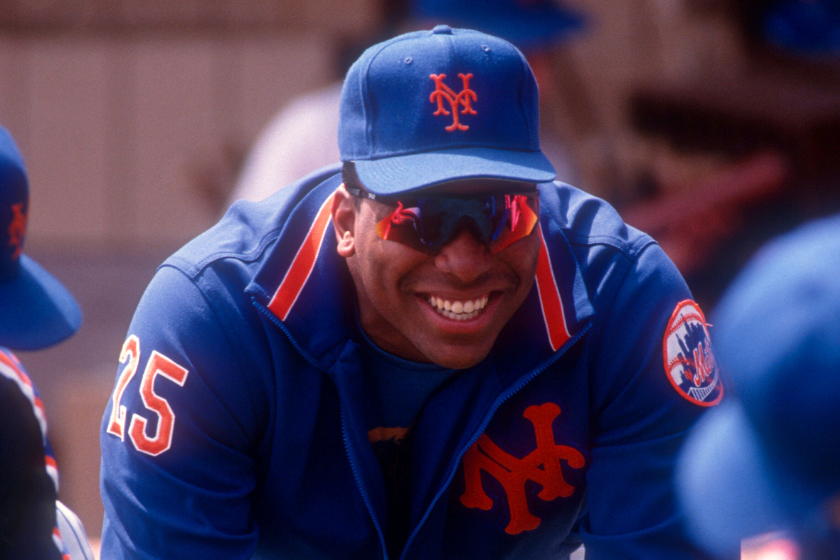
Photo by Bruce Bennett Studios via Getty Images Studios/Getty Images
Ha ha ha ha, just kidding. Everyone knows this deal is the worst. Ever. Seriously. Bernie Madoff was involved in this horrendous contract. It's the worst of all-time.
Unless, of course, you only consider what Bonilla's restructuring did for the New York Mets. With addition payroll now freed up, the Mets were able to go out and sign starting pitcher Mike Hampton, who was an integral piece of the 2000 World Series run, and and won NLCS MVP. That following year, in the 2001 offseason, Hampton signed with Colorado, awarding the Mets the Rockies' first-round pick in the 2001 draft. With the 38th pick in the 2001 draft, the Mets selected third baseman David Wright, better-known know to Mets fans as, The Captain.
Without Bonilla's contract restructure and deferment, David Wright would have been a legend for Colorado Rockies, not for the Mets. Without Bonilla, the Mets might have stayed out of the 2000 playoffs, further dividing the fanbase and creating a real powder keg in Queens.
10. Kevin Brown, Florida Marlins
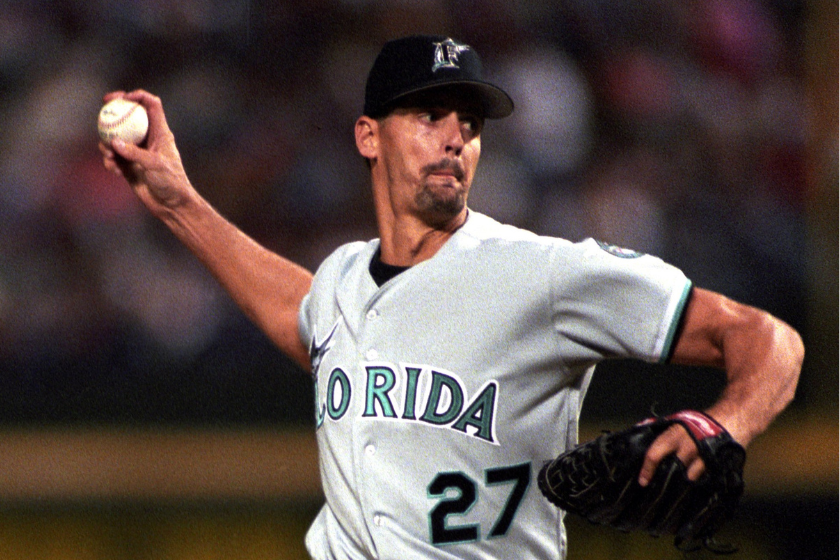
Photo by Ronald C. Modra/Getty Images
Before they were the Miami Marlins, the Florida Marlins somehow won two World Series titles, and this contract is one of the reasons why. Kevin Brown's three-year, $12.6 million deal was probably the key factor in the Marlins shocking 1997 World Series title — and since he recorded 14.9 WAR over the first two seasons of the contract, I'd say that was money well-spent. Then the Marlins blew up the emerging dynasty, dealing Brown to San Diego for Derrek Lee, who would later be a key contributor to their second unexpected World Series title in 2003.
9. Roger Clemens, Toronto Blue Jays
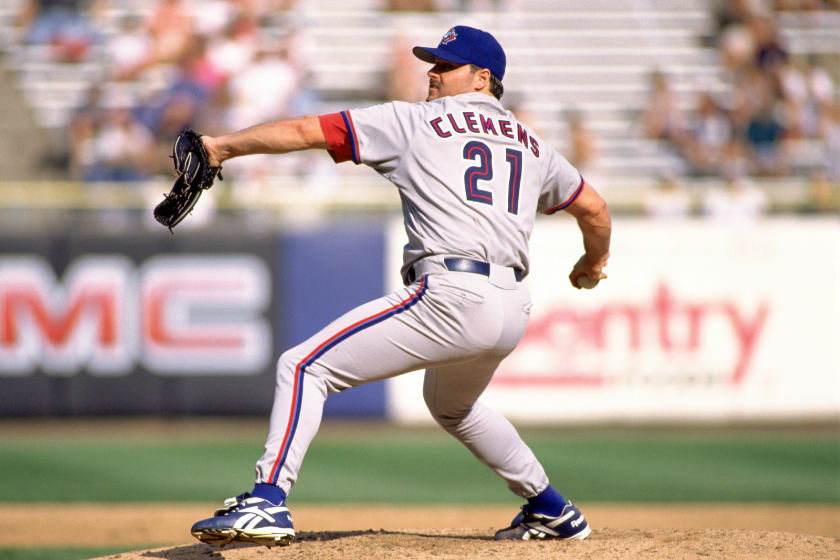
Photo by SPX/Diamond Images via Getty Images
Whether you think Roger Clemens is the greatest pitcher ever is a matter of steroid-related debate, but it's hard to argue his Toronto Blue Jays free agent deal was anything other than a masterstroke. Dan Duquette, general manager of the Red Sox, thought Clemens was on the downswing and let him walk. That turned out to be a mistake. Clemens won two Cy Young awards in Toronto before demanding a trade to New York — and since the trade netted the Jays David Wells, who finished third in the Cy Young race a year later, even that move worked out for them.
8. Vladimir Guerrero, Anaheim Angels

Photo By John Cordes/Icon Sportswire via Getty Images
RELATED: Vlad Guerrero and Vlad Jr. are Sharing More Than Just a Swing, They're Sharing Stats
It's easy to forget now that the Angels have spent the past decade swinging and missing with huge free agent signings (Jered Weaver, Albert Pujols, Josh Hamilton), but once upon a time they made one of the best free agent deals ever for a guy with a perpetually dirty helmet. Vladdy Daddy was a four-time all-star in Montreal by the time he hit free agency, then signed a deal in California and immediately won an MVP award, making four straight all-star teams with the Angels.
7. Adrian Beltre, Texas Rangers
Stephen Brashear/Getty Images
Typically, when a player suddenly hits much better in their 30s than they did in their 20s during the 2000s and 2010s, we immediately suspect PED usage. But there's no mystery why Beltre got better: he simply got luckier. Beltre spent his 20s playing in the cavernous Dodger Stadium and far, far worse stadium in Seattle, so it's no shock his numbers jumped when he got to the bandbox that the Rangers play in Texas. When all is said and done, Adrian Beltre is one of the three best third basemen ever to play the game, and his 5-year, $80 million contract has to be considered one of the best bargains of all-time, especially considering he later re-upped for two additional years at an extremely reasonable $18 million per year. Honestly, his $9 million one-year contract with the Red Sox that preceded this one could've made the list, too.
6. Larry Walker, Colorado Rockies
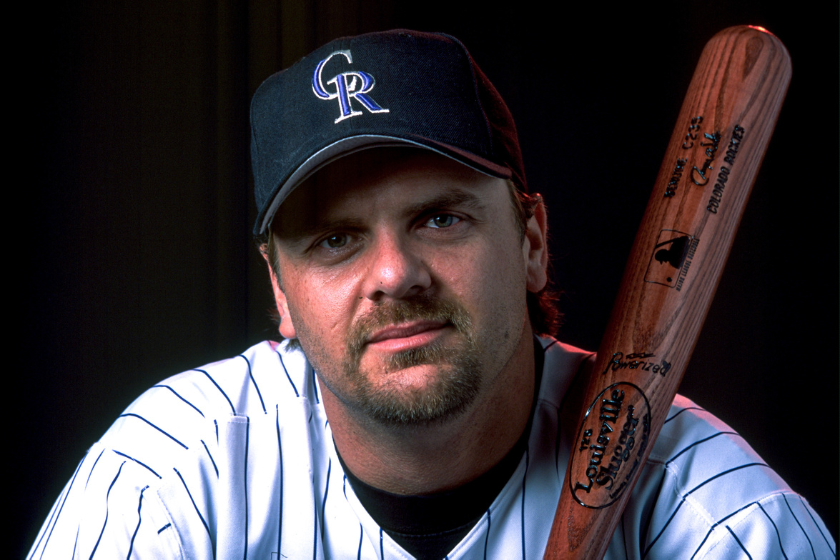
Photo by Jamie Schwaberow/Rich Clarkson and Associates/Colorado Rockies/MLB Photos
Oh, for the days when a four-year, $22.5 million deal was record-breaking. Those were the terms of Larry Walker's 1995 deal with Colorado. The first two years were good if injury plagued, but the other two were all-world: Walker won the 1997 MVP award with a staggering 9.8 WAR, then followed it up with another good year. He played six more seasons in Colorado, all of them good to great (if frequently injury-plagued), and he ultimately became the first member of the Hall of Fame to wear a Rockies cap.
5. Barry Bonds, San Francisco Giants

Photo by Michael Zito/WireImage
RELATED: Barry Bonds Belongs in the Hall of Fame. No Question.
Were it not for the cloud that hangs over Barry Bonds' later career, this would easily rank No. 1 all time. Barry Bonds already looked like a future Hall of Famer when he signed a six-year, $43 million deal, having won two of the last three National League MVP awards in Pittsburgh, and the run of this contract did nothing to dispel that. Bonds immediately won another MVP award, putting up 49.6 WAR over the life of the deal. Ironically, his PED usage didn't start until after this contract, on the next deal that kept him in California.
4. Manny Ramirez, Boston Red Sox
G. N. Lowrance/Getty Images
RELATED: "Just a Regular Player": Manny Ramierz's Comments About Derek Jeter Put Respect Ahead of Rivalry
Manny Ramirez is best known now for his goofy, unhinged behavior better known as "Manny Being Manny," but people forget just how good he was as a hitter during his prime. Though that prime began in Cleveland, it reached new heights when he signed an eight-year, $160 million contract with the Red Sox. Ramirez started the contract with five straight top ten MVP finishes, ultimately helping the team to two World Series titles (and a World Series MVP for himself).
3. Reggie Jackson, New York Yankees
Joe Dombroski/Newsday RM via Getty Images
RELATED: Relive the Night Reggie Jackson Became "Mr. October"
The reason the Yankees swing and miss so hard on big free agent contracts is one of the first ones they ever pulled was such a massive home run. Five years, $2.9 million is nothing nowadays, but it was huge money in the 1970s, and "Mr. October" was worth every penny. The former Baltimore Orioles and Oakland Athletics slugger was an all-star every season of the deal and won two World Series titles with the team, putting up 12 homers in 34 games in the playoffs over that span.
2. Greg Maddux, Atlanta Braves
SPX/Ron Vesely Photography via Getty Images
RELATED: "Chicks Dig The Long Ball" Remains Baseball's Best Commercial
At the apex of the Steroids Era, the most dominant pitcher in baseball threw 89 MPH. Greg Maddux was a fascinating guy to watch, a master of off-speed control who dominated despite barely topping 90 on the radar gun, and while he won a Cy Young the year before he signed this contract, it was only the beginning. Maddux won three Cy Youngs during the first three years of his five year, $28 million contract, then finished in the top five the last two years. Along the way he helped the Braves to the 1995 World Series title. Since he stayed with the team another six years and became arguably the franchise's signature player, it worked out pretty well.
1. Randy Johnson, Arizona Diamondbacks
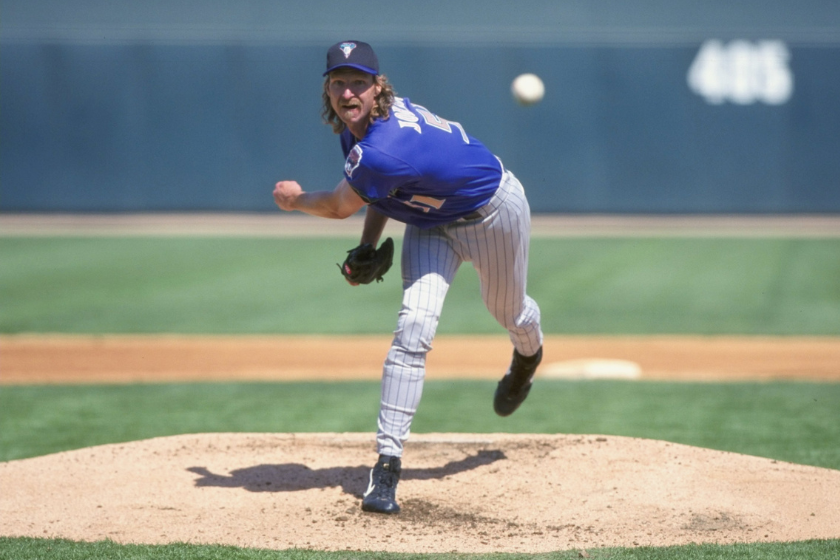
Photo by Todd Warshaw / Allsport, via Getty Images
RELATED: Randy Johnson Making a Bird Explode is a One-in-a-Billion Freak Occurrence
It's really hard to say there's ever been a better free agent deal than Randy Johnson's relocation to the desert. Johnson had already won a Cy Young when he signed a five-year, $68.4 million contract with the D-Backs in 1999, but I don't think anyone could've predicted he would immediately embark on the most dominant four-year run for starting pitchers in major league baseball history. Pedro Martinez, Sandy Koufax, Greg Maddux, Clayton Kershaw — NONE of them ever did what Johnson did from 1999-2002, posting an unreal 38 WAR over four years and winning the Cy Young every season — as a lefty, no less. Nobody towered higher than the Big Unit.
This article was originally published on January 12, 2022, and has been updated since.
